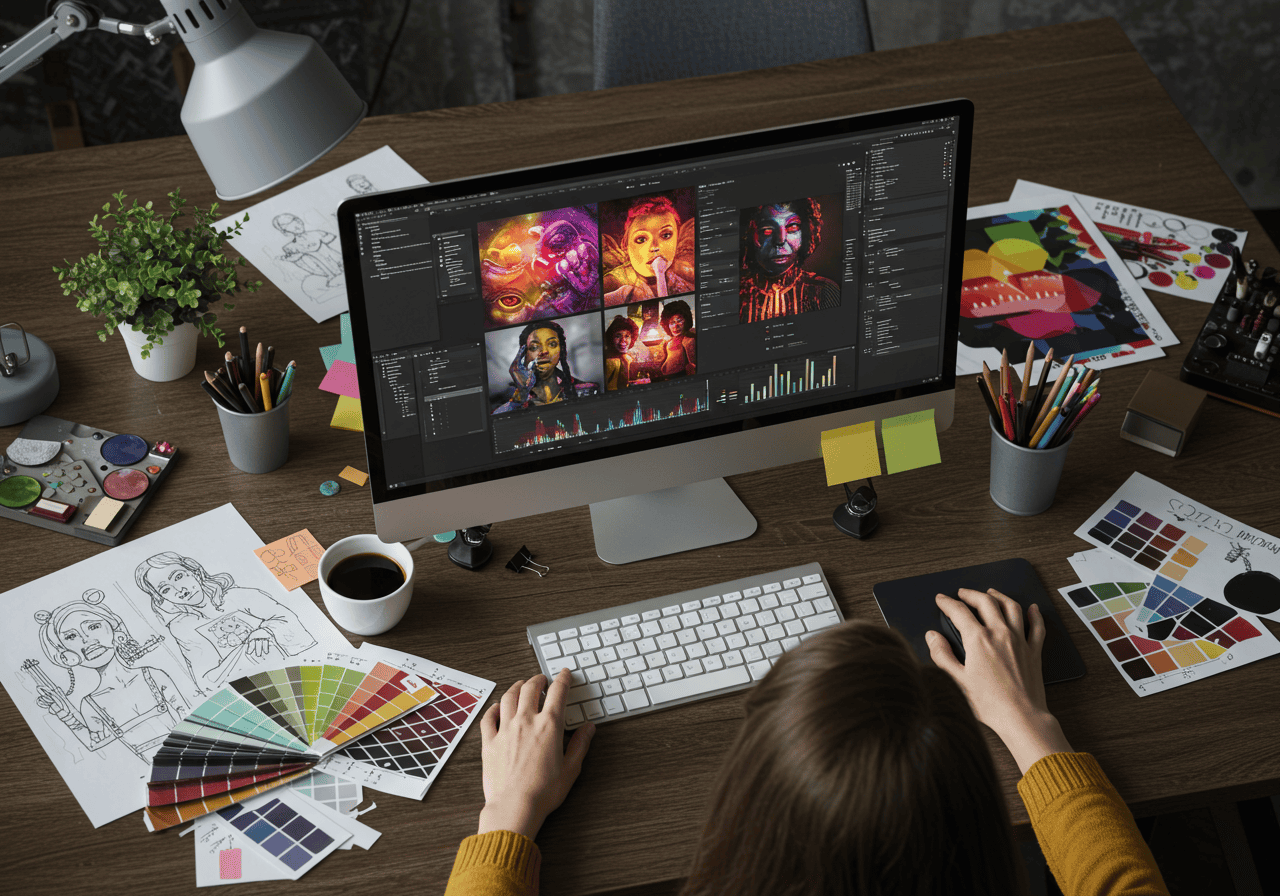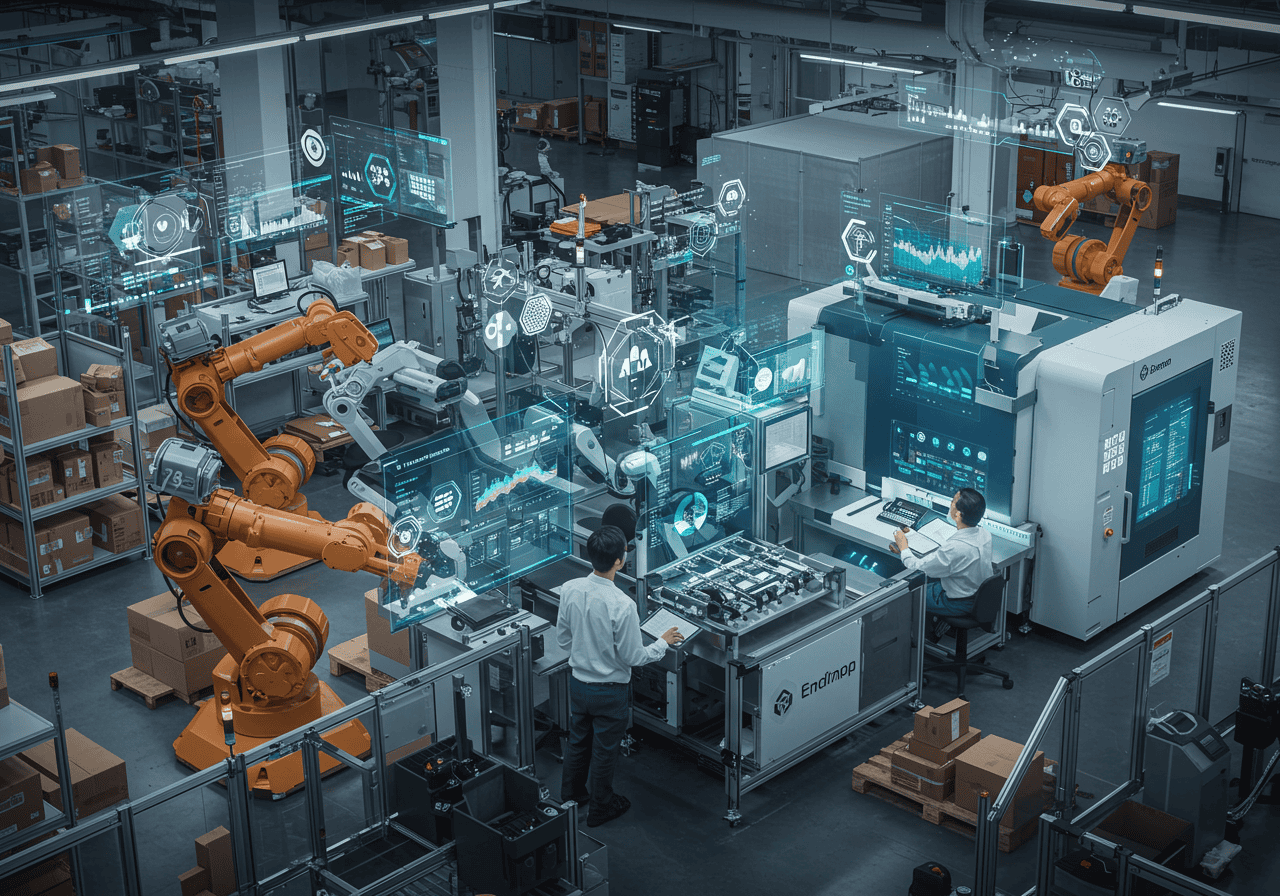Exploring the Impact and Practical Applications of AI Image Generation & Editing Tools for Creative Professionals
Exploring the Impact and Practical Applications of AI Image Generation & Editing Tools for Creative Professionals
Introduction
In a world where visuals hold the power to inform, engage, and entertain, the ability to conjure compelling images at your fingertips is nothing short of magical. For creative professionals, the advent of AI image generation and editing tools is akin to striking gold. These tools don’t just make life easier; they redefine the creative landscape by allowing for unprecedented levels of creativity and efficiency.
Technological evolution has continued to astonish us, with AI stepping into the spotlight as a game-changer in the creative process. No longer confined to traditional methods, artists and marketers now have innovative tools that enhance, transform, and even generate pristine images. This blog post dives into the transformative impact of AI image generation tools on creative professions. We’ll explore practical applications, compare some popular tools, discuss best practices for optimization, and navigate the intricate ethical considerations. The aim? To empower professionals to smoothly weave these technologies into their workflows.
Overview of AI Image Generation & Editing Tools
So, what exactly does it mean to have AI image generation tools in your arsenal? At its core, AI image generation refers to the use of algorithms and deep learning techniques that allow users to create and modify images. It’s like having an unending palette of colors ready to paint whatever ideas you conjure.
Major Types Available
Text-to-Image Generators
In the realm of AI image generation, text-to-image tools are hotshots. Imagine simply typing a phrase or sentence, and voilà! Out pops a captivating image that brings your words to life. Tools such as DALL-E 3 and Midjourney are the magicians behind this transformation. They decipher your commands and craft visuals that are often stunning interpretations of your text.
These generators have found applications across various creative projects. For instance, a graphic designer sketching out visuals for an ad campaign can quickly generate multiple iterations of a concept, sparking inspiration and collaboration that may not have been possible with manual methods.
Image Editors
Now, let’s talk about the unsung heroes of AI image tools — image editors. Tools such as Luminar Neo step onto the stage to enhance or modify existing images. Need to swap out a dull sky for a brilliant sunset? Or perhaps you’re looking to eliminate pesky distractions from a beautiful landscape? AI image editing tools offer capabilities like object removal and quality enhancement, allowing creatives to polish their work with ease.
Practical Applications
Social Media Management
A picture is worth a thousand likes. With AI tools in the mix, social media management reaches new heights. Rather than spending countless hours sourcing images or trying to create eye-catching visuals manually, social media managers can generate unique images tailored to their brand and message.
Imagine a marketing team preparing for a product launch. With generated visuals, they can maintain a cohesive aesthetic throughout promotional posts. Research shows that using visually engaging content can lead to higher engagement metrics for social media posts. Buffer provides an excellent overview of how these tools can spice up your feeds with effortlessly generated imagery.
Marketing Collateral
When it comes to marketing collateral, AI image generation tools act like a superhero cape. They allow creative teams to produce unique advertisement designs at lightning speed. This streamlining of the graphic design process isn’t just a time-saver; it opens the door to creative fronts that were once too cumbersome to explore.
Think about how many printable materials, digital ads, and flyers a business needs. Having the ability to generate a plethora of designs means that teams can experiment with different colors, arrangements, and messages without the usual time constraints. According to Snappify, these tools are saving time while simultaneously increasing creativity. It’s a win-win scenario!
Content Creation
In the vast world of content creation, the struggle to find the perfect visuals to complement articles can be daunting. Enter AI image generation. By harnessing these tools, content creators can tailor visuals specifically for their blogs or articles, making the reading experience richer and more engaging. Visuals can capture attention more effectively than text alone, enhancing user interaction significantly, as found in recent trends highlighted by Zapier.
Comparison of Popular Tools
DALL-E 3
DALL-E 3 has earned accolades for its ability to generate sophisticated images based on complex queries. It’s like having a virtual artist waiting to interpret even your most intricate ideas into gorgeous visual forms. CNET notes that this tool seamlessly caters to a range of applications, from whimsical art to more serious projects, making it highly versatile.
Midjourney
On the artistic front, Midjourney takes center stage. This tool has garnered praises for its stunning visual quality and distinctive styles. Particularly favored for branding projects, Midjourney helps users channel their creative visions into cohesive and eye-catching designs.
Canva Magic Media
Canva’s Magic Media feature provides a delightful combination of image generation and design editing tools. With its user-friendly interface, it appeals to a wide demographic, especially those who may lack technical background yet desire engaging visuals. CNET highlights how this tool empowers users to bring their ideas to life without the learning curve associated with more technical software.
Best Practices for Utilization
Harnessing AI image tools effectively requires a bit of finesse. Here are some best practices to keep in mind.
Experiment with Styles
Using different artistic styles can be a game-changer for branding needs. Each tool comes with its unique flair, and the results can vary dramatically based on the style chosen. Embracing experimentation is vital for uncovering the right aesthetic. As Buffer suggests, don’t shy away from trying out various looks until you settle on the one that resonates with your vision.
Incorporate Feedback
Regularly seeking feedback on your generated content is a smart move. Sharing your work with peers or target audiences allows for fresh perspectives and constructive criticism. This practice can enhance the overall quality of the output and stir creativity, pushing your projects to new heights.
Understand Limitations
Every tool has its limits, and understanding what your chosen AI image generator or editor can and cannot do is key. Familiarizing yourself with specific capabilities can greatly improve effective outcomes. Learn the ins and outs of your tools to ensure you leverage them to their full potential, as pointed out by Zapier.
Ethical Considerations
While the benefits of AI image tools are vast, they also come with their fair share of ethical considerations.
Copyright Issues
A gray area looms when it comes to copyright and AI-generated images. Many of these images cannot be copyrighted since they are not considered the work of a human creator. This creates a Pandora’s box of questions surrounding ownership and usage rights. Built In discusses how the implications are vast for anyone utilizing AI-generated content.
Bias and Representation
AI tools face scrutiny for perpetuating bias and stereotypes. A notable example is Lensa, which has been criticized for its often narrow representation in generated images. This serves as a reminder of the importance of responsible usage. AI Image Ethical & Legal Issues emphasizes the need for creators to develop and use these tools mindfully, ensuring the visuals produced reflect diversity and inclusiveness.
Conclusion
AI image generation and editing tools are undeniably altering the creative landscape, igniting new sparks of inspiration across various fields. By streamlining processes and amplifying creativity, these tools invite professionals to think beyond traditional methods. Nevertheless, the journey through innovation requires that we tread carefully, considering ethical implications and the power of representation.
Advancements in technology show no signs of slowing, and keeping informed about the capabilities and responsible usage of these tools will only empower creative professionals to fully realize their potential.
It’s time to seize the opportunity and experiment with these tools! Share your experiences and thoughts on incorporating AI into your creative processes; you never know what may inspire someone else along the way.
Share this content:




Post Comment